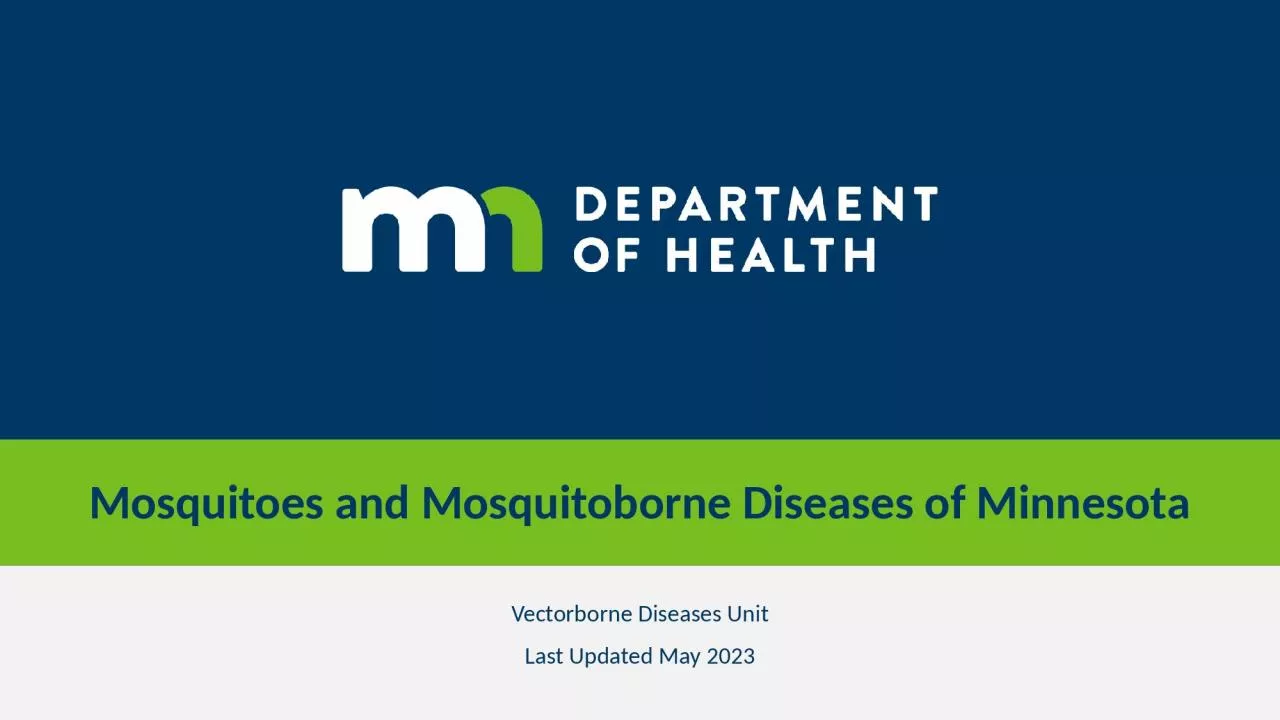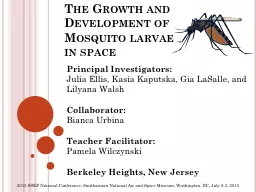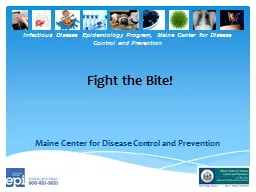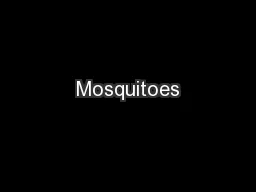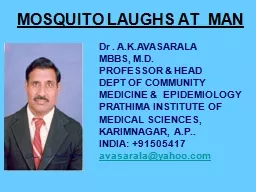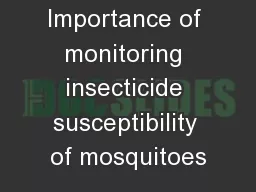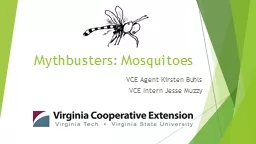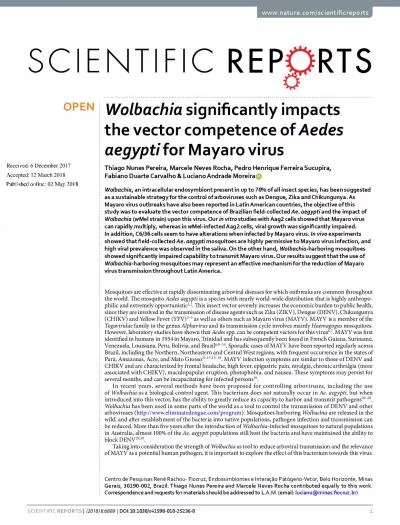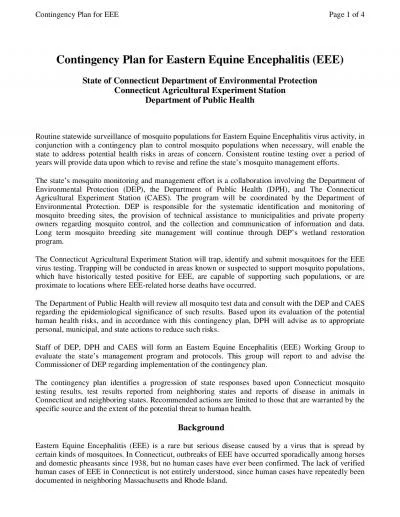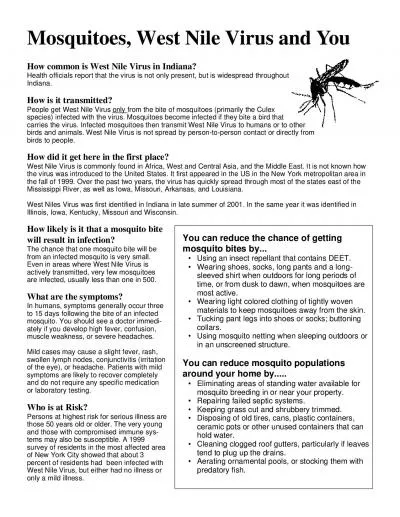PPT-Mosquitoes and Mosquitoborne Diseases of Minnesota
Author : lucy | Published Date : 2024-03-13
Vectorborne Diseases Unit Last Updated May 2023 What is a mosquitoborne disease and why should you care about it People can get a mosquitoborne disease when they
Presentation Embed Code
Download Presentation
Download Presentation The PPT/PDF document "Mosquitoes and Mosquitoborne Diseases of..." is the property of its rightful owner. Permission is granted to download and print the materials on this website for personal, non-commercial use only, and to display it on your personal computer provided you do not modify the materials and that you retain all copyright notices contained in the materials. By downloading content from our website, you accept the terms of this agreement.
Mosquitoes and Mosquitoborne Diseases of Minnesota: Transcript
Download Rules Of Document
"Mosquitoes and Mosquitoborne Diseases of Minnesota"The content belongs to its owner. You may download and print it for personal use, without modification, and keep all copyright notices. By downloading, you agree to these terms.
Related Documents

